Evening All,
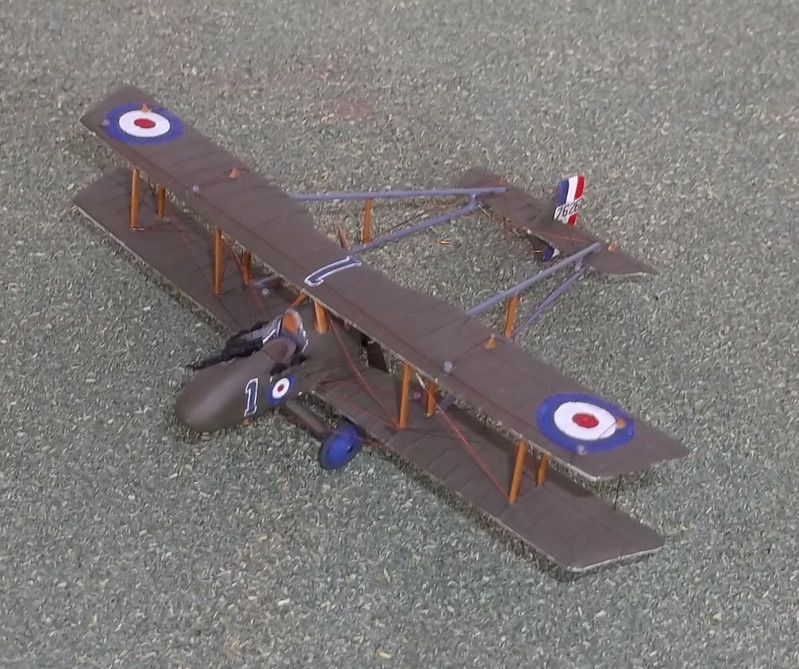
The RAF FE8 was an exact contemporary of the better known Airco DH 2 with which it shared many characteristics. Both were single seat pusher designs, the layout being necessitated by the lack of an interrupter gear for a forward firing machine gun. Both were armed with a single rifle calibre Lewis machine gun and both were good designs for their time. However while the Airco design entered service in early 1916, delays in production of the FE 8 meant that the latter did not reach the front line with 40 Squadron until August 1916, and 41 Squadron did not get to the Western front until October of that year, by which time the pusher layout had been rendered obsolete by new German tractor biplanes with two forward firing synchronised guns. The type fully equipped these two squadrons, but owing to a shortage of suitable replacements, it continued in service with 41 squadron until July 1917 when the gave up the last pusher fighter in operational service for Nieuport 17's. A few were sent to training squadrons in England but there was little need for pilots to learn how to fly pushers, so this part of their career was short lived.
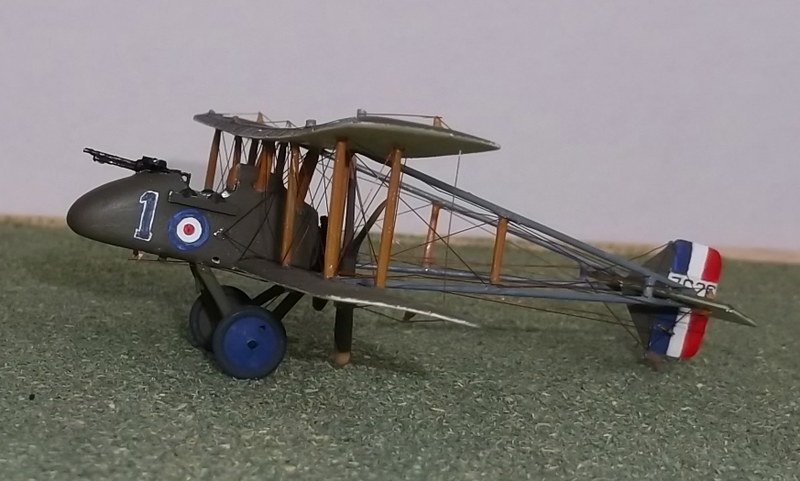
The Farman Experimental (FE) no 8 was designed by a team in the Royal Aircraft Factory in 1915 and first flew in October of that year. It was unusual for the time in having steel tubing make up a large part of its frame. and it had an armoured underside to the nacelle. Powered by a 100 hp Monosoupape rotary engine, it could reach 98 mph, a good speed for a single seater, and orders were placed with manufacturers in Britain and France. However delays in delivery meant that it did not enter service until the pusher design itself had been rendered obsolete by technical advances in aero design, so only four squadrons operated with the type and losses were comparatively high.
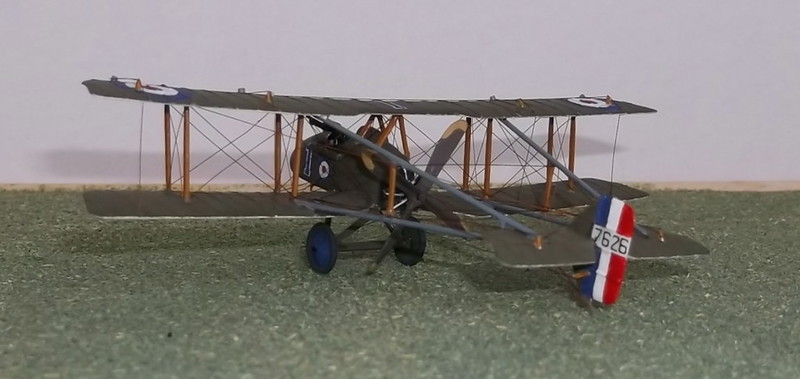
The late arrival at the front of 40 and 41 Squadrons meant that the bulk of the fighting over the Somme in the summer of 1916 had stopped by the time that they were ready for action. German opposition had also improved markedly, so what had originally been a good design had now become a bit of a liability, and the type earned a poor reputation which was not completely warranted. Initially it was able to contribute to Allied successes in the air as the FE 8's could fight well against the older machines used by the Germans. Lieutenant E L Benbow of 40 squadron shot down 8 enemy machines in an FE 8 including numbers of the new tractor types employed by the Germans. Indeed there were occasions when they could hold their own against the more modern types, as von Richtofen found to his cost when a machine from 40 Squadron holed his fuel tank and forced him to make an emergency landing on 7th March 1917. However von Richtofen and Jasta 11 got their revenge two days later when six out of nine FE 8's from 40 Squadron were damaged or destroyed in a single engagement. A few days later the unit started to re-equip with Nieuport 17's.
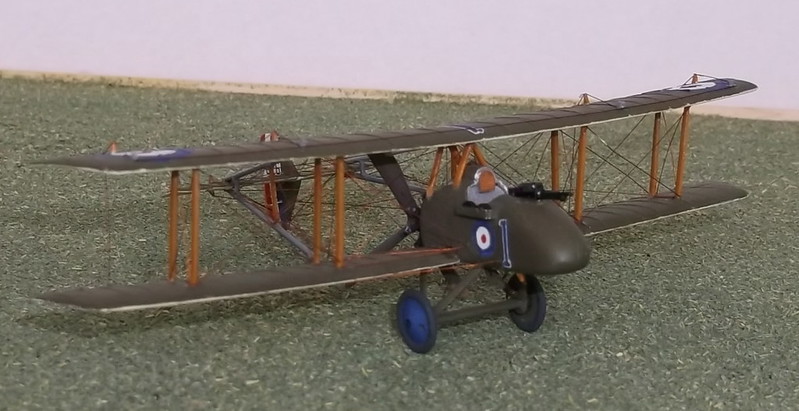
The model depicts a machine flown by Captn. KM St CG Leask of 41 Squadron in November 1916 in Belgium. It was sent to France in October 1916 and had reached 41 Squadron by November, but its history after that is obscure. The number and blue wheel covers were flight markings, the remainder of the markings being typical of the time.

I know that there are resin models of this aircraft available in this scale but I am not keen on resin kits as I consider them to be expensive and I have no experience with them. Instead I chose to follow a path with which I am familiar: convert a plastic kit. This was based on an article by A Woollett in Airfix Magazine published in June 1972. He used an Airfix DH 4 as the basis for his model but I decided to make mine from an Airfix Avro 504 instead, and used the tail unit, fuel tank and propellor from the DH 4, these being left over from other conversion projects. The wings were shortened and the chord reduced by removing the front and rear edges and reshaping, the nacelle was push moulded from 30 thou plastic card and the cut down fuel tank made the head-rest. The tail surfaces were cut down from the DH 4 but could easily have been made from card. The booms were florist's wire, the inter-plane struts were cut down Avro 504 parts and the remainder were shaped from card. The wheels and engine were from the Avro kit and the propellor from the DH 4, suitably cut down. All of the other parts were scratch built except the gun which came from Aeroclub. All of the markings except for the serial were hand painted. There is a full build thread on Airfix Tribute Forum.
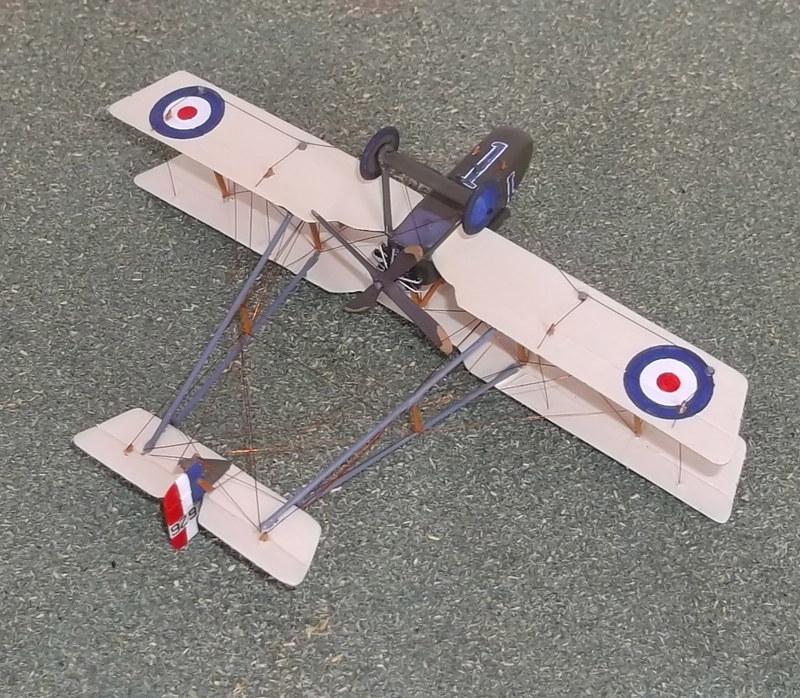
Thanks for looking.